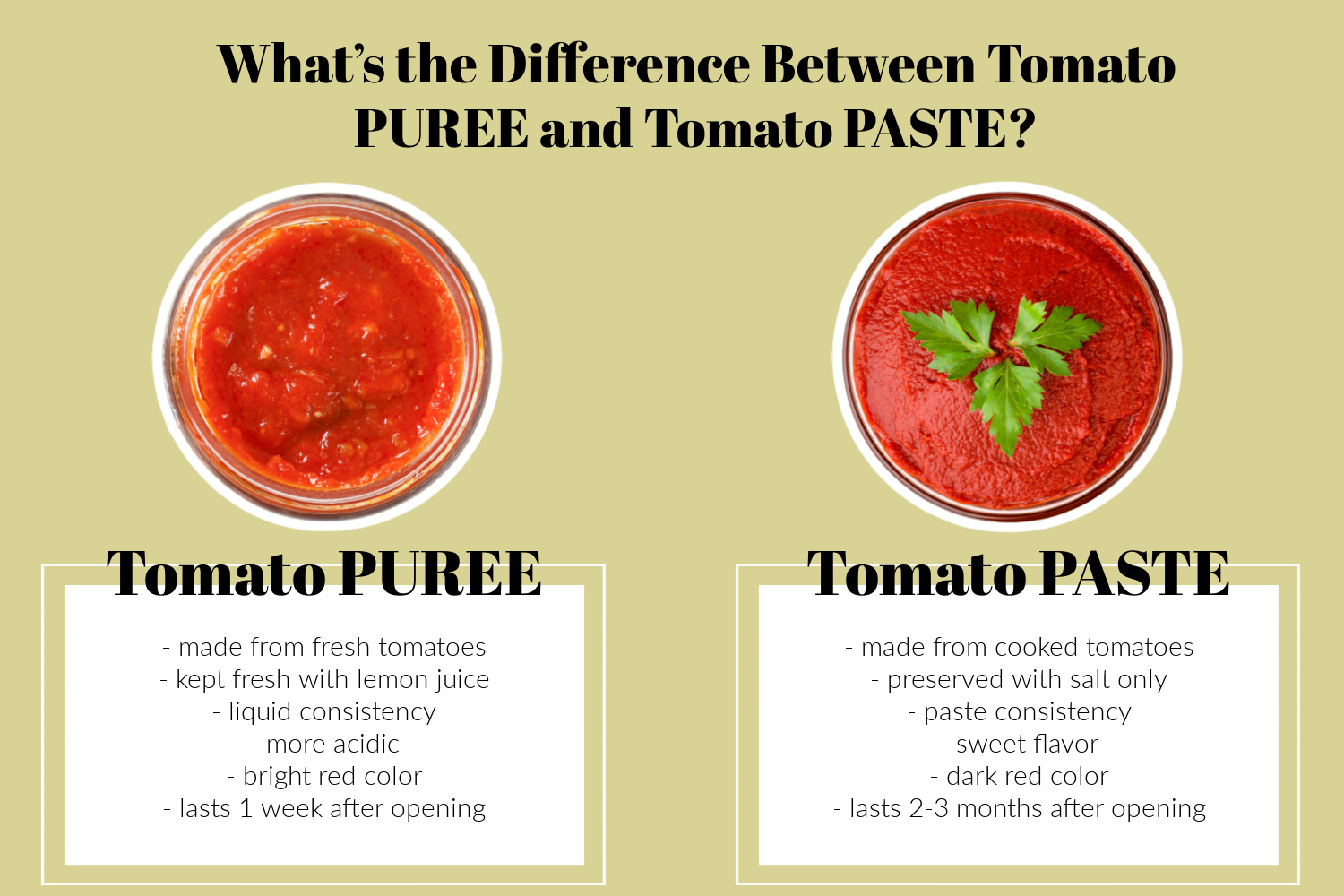Tomato puree and tomato paste may look similar; however, they are different ingredients and can’t always be used interchangeably. There are some instances where swapping tomato paste for tomato puree won’t matter, but before you do, learn the details so you don’t inadvertently change the taste of a recipe.
6 Differences Between Tomato Paste and Tomato Puree
1. How It’s Made
Tomato puree is a fresh tomato that is blended to create a uniform liquid. Tomato paste is cooked tomatoes that have been boiled to evaporate most of the liquid and create a concentrated tomato semi-solid.
2. Acid Content
Lemon juice, or another acidic liquid, is added to tomato puree to keep it fresh. Tomato paste is usually preserved with just salt, though occasionally, lemon juice may also be added, but in smaller amounts. Because lemon juice is always added to tomato puree and is added in larger amounts, it is more acidic than tomato paste.
3. Consistency
Tomato puree is a liquid that must be poured into a dish. Tomato paste is a paste with a consistency similar to toothpaste. It must be squeezed from a tube or scooped from a jar or can with a spoon.
4. Sweetness
Tomato paste is sweeter than tomato puree due to the lower amount of added acid, as well as the cooking process, which brings out the natural sweet flavor in the tomatoes.
5. Color
Tomato puree is bright red, sometimes with an orange hue, depending on the acid content. Tomato paste, because it is more concentrated, is a deep or dark red color.
6. Shelf Life
Once opened, a can or bottle of tomato puree must be used within a week; otherwise, it will go bad, even when stored in the fridge. Tomato paste has a long shelf life and can be stored in a jar or tube in the fridge for 2-3 months after opening.
Can You Swap Tomato Paste for Tomato Puree?
Both tomato paste and tomato puree can be used for sauces or glazes; just know that tomato paste is more concentrated, meaning less is needed to give your recipe a tomato flavor.
When making pasta, it’s better to use tomato puree, as you can add more to the recipe without having to worry about making it overpowering, though tomato paste can be used to thicken a tomato puree-based sauce, like when making homemade spaghetti sauce or pizza sauce.
For soup recipes or meatloaf, only tomato paste should be used. Tomato puree is too acidic for these recipes, and adding tomato puree in place of tomato paste could ruin the recipe.

Leave a Reply